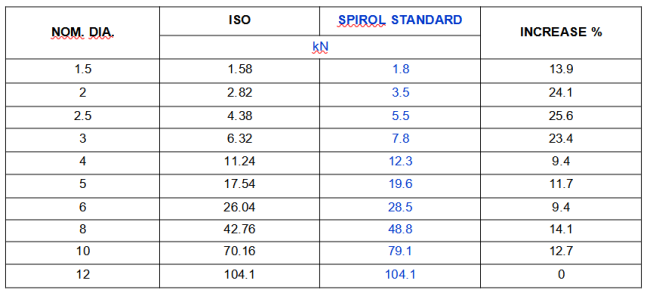
What you didn’t know about Slotted Pins
By Jeff Greenwood, Product Sales Engineer, SPIROL
Power Transmission Machine Building
Sponsored by SPIROL
The Advantages of SPIROL Standard Slotted Pins vs ISO 8752 Slotted Pins.
 SPIROL manufactures two types of Slotted Spring Pins: SPIROL Standard Slotted Pins and ISO 8752 Slotted Pins. SPIROL Standard Slotted Pins offer significant advantages as compared to ISO 8752 Slotted Pins, which were originally designed to function as Dowel Bushings.
SPIROL manufactures two types of Slotted Spring Pins: SPIROL Standard Slotted Pins and ISO 8752 Slotted Pins. SPIROL Standard Slotted Pins offer significant advantages as compared to ISO 8752 Slotted Pins, which were originally designed to function as Dowel Bushings.
Dowel Bushings are used in conjunction with bolts and isolate bolt threads from shear planes. Conversely, SPIROL Standard Slotted Spring Pins were designed to perform one of the following pinning functions without the addition of any other fastener: hinge, alignment, retention, stop, or hub/shaft connection. While both Slotted Pin types can be effective in an assembly, SPIROL Standard Slotted Spring Pins are easier to install and superior in form, fit and function.
Chamfer
SPIROL Standard Slotted Spring Pins specify a maximum chamfer diameter to facilitate the installation process and address the common issues experienced with installing ISO 8752 Slotted Pins. For example, a ø6mm SPIROL Standard Slotted Spring Pin has a maximum chamfer diameter of ø5.8mm, providing 1mm clearance on either side to facilitate installation into the hole.
Conversely, since ISO 8752 only requires that the maximum chamfer diameter be “less than” the nominal pin diameter, this often causes installation issues. In other words, a ø6mm ISO 8752 Slotted Pin chamfer need only measure smaller than ø6mm. So, for example, a value of ø5.99mm would be acceptable, leaving only 0.0005mm on either side to help get it started into the hole.

SPIROL Standard Slotted Pins sits deeper in the hole to facilitate installation.

ISO 8752 Slotted Pins are often difficult to install because the chamfer diameter is not much smaller than the hole.
Lower Insertion Force
SPIROL Standard Slotted Pins generally require less force to install as compared to ISO 8752 pins. To understand the difference, it is necessary to consider the pin’s starting diameter. ISO 8752 pins possess a larger ØOD, and as a result, more force is required to compress the pin during installation. On average, SPIROL Standard Slotted Spring Pins are installed with 40% less force than the equivalent ISO 8752 Slotted Pin.
Interlocking
ISO 8752 Slotted Spring Pins are prone to interlocking. The reason for this is that ISO 8752 Slotted Pins have a slot width wider than the thickness of the raw material. Interlocking often causes feeding problems and can result in production downtime. ISO 8752 Slotted Pins will also interlock during the plating process and these nested pins may end up permanently bonding together. In the event that they become loose again during or after plating, there will be sections of the pin that have little to no plating coverage.

Example of interlocked Slotted Pins.
Conversely, SPIROL Standard Slotted Spring Pins have a maximum slot width specification less than the material thickness and thus can not interlock. Therefore, SPIROL Standard Slotted Pins can be automatically fed and installed without risk of downtime due to interlocking, and they can be plated without risk of incomplete plating coverage.
Shear Strength
Another advantage is that SPIROL Standard Slotted Pins provide greater shear strength than ISO 8752 Pins.

Conclusion
While SPIROL manufactures both SPIROL Standard and ISO 8752 Slotted Pins, the SPIROL Standard Slotted Pins are superior in every category as it relates to performance and the assembly process. On the contrary, there are no technical benefits with using ISO 8752 Slotted Pins. Optimize your assembly by designing in SPIROL Standard Slotted Spring Pins!
In addition to offering Slotted Spring Pins, SPIROL also offers a full line of Pin Installation Equipment – from manual to fully automatic modules!
View SPIROL’s Slotted Spring Pin Design Guide for specifications and helpful tips for design engineers, or download 2D/3D drawings for your assembly at Shop.SPIROL.com.
Contact SPIROL today for complimentary application engineering support!
